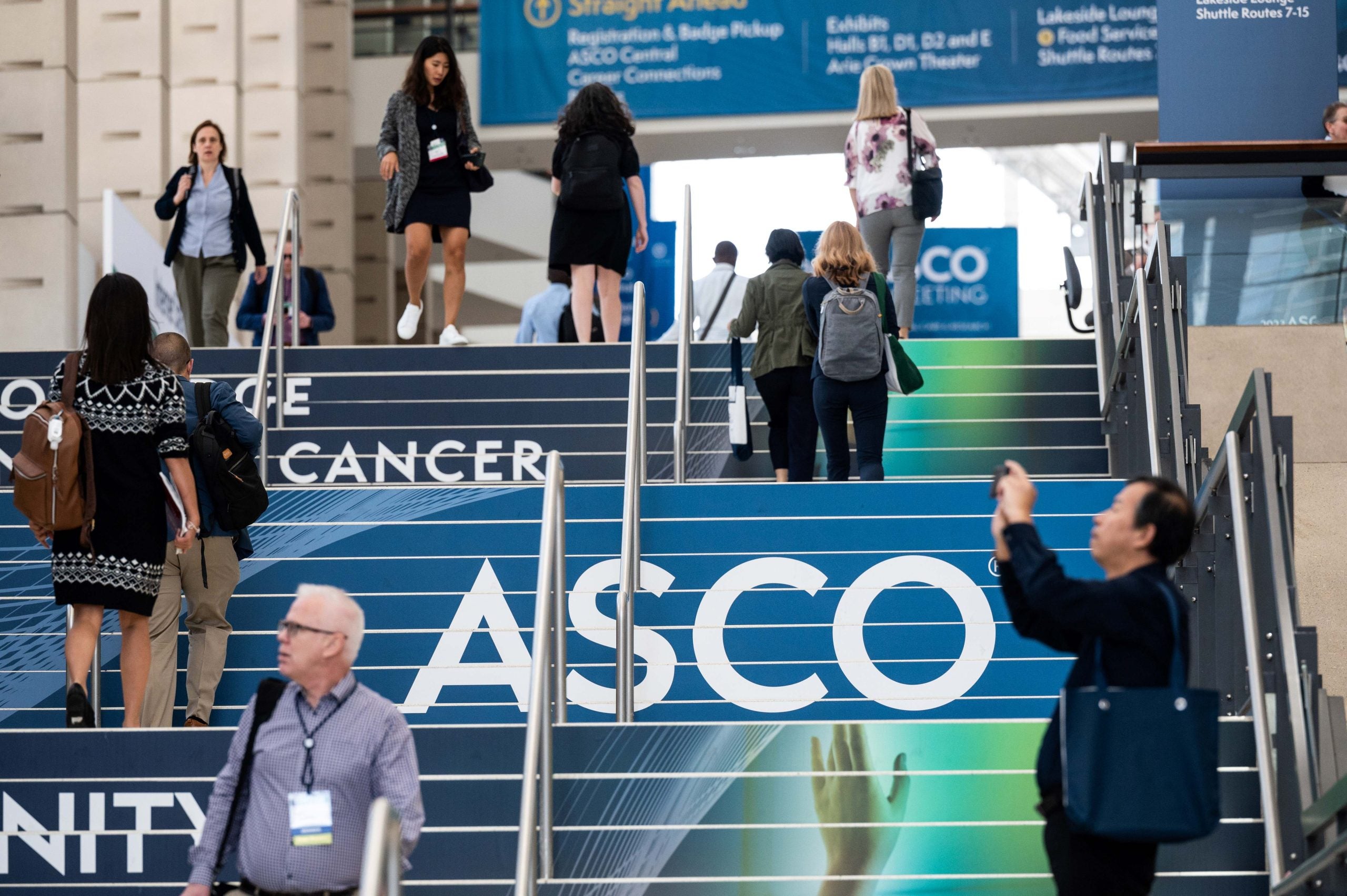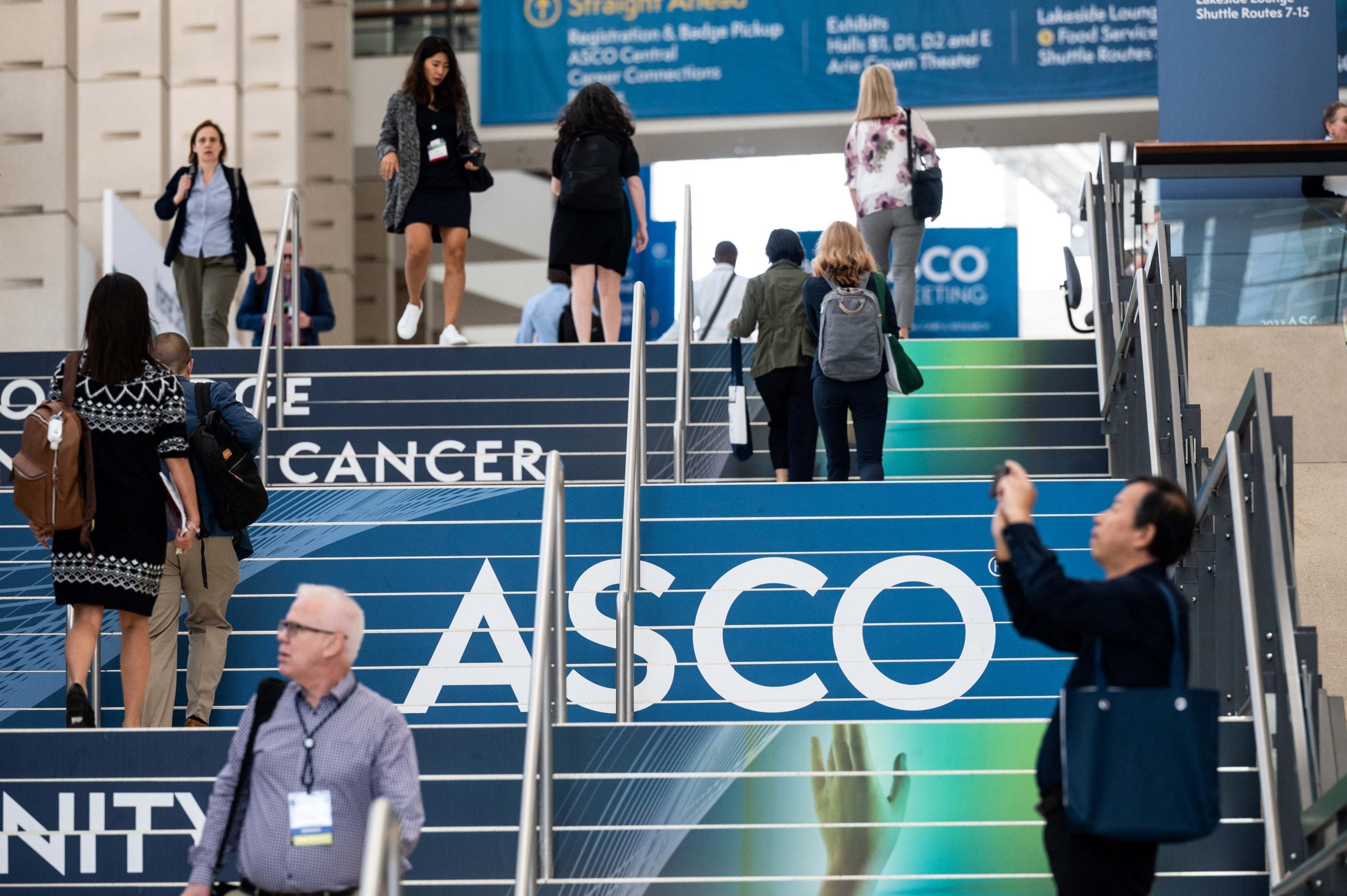ASCO 2023: Keytruda becomes a new option in perioperative NSCLC Leave a comment
Source

<!–
–>  Physicians, researchers, and health care professionals from over 100 countries are attending the 59th ASCO Annual Meeting on Friday, 1 June. Image Credit: Photo by © ASCO/Nick Agro 2023.
Physicians, researchers, and health care professionals from over 100 countries are attending the 59th ASCO Annual Meeting on Friday, 1 June. Image Credit: Photo by © ASCO/Nick Agro 2023.
Early-stage non-small cell lung cancer (NSCLC) is typically treated with surgery followed by adjuvant therapy (chemo ± radiation) in patients deemed to be at higher risk. The use of a pre-surgical course of drug treatment (neoadjuvant), is not well established thus far and can differ substantially between countries and even hospitals within the same country.
At the ongoing American Society of Clinical Oncology (ASCO) Annual Meeting, being held 2–6 June, new data was presented from the randomized, controlled Phase III KEYNOTE-671 study of MSD’s Keytruda (pembrolizumab) (abstract LBA100). Patients with resectable stage II, IIIA, and IIIB (T3-4N2) disease of both squamous and non-squamous histology were randomized to receive neoadjuvant Keytruda with platinum-based chemotherapy followed by adjuvant Keytruda, or placebo with platinum-based chemotherapy followed by placebo. At a median duration of follow-up of 25.2 months, the two-year event-free survival (EFS) was 62.4% in the Keytruda arm, versus 40.6% in the placebo arm (hazard ratio [HR]: 0.58). The median EFS was not reached in the Keytruda arm, and was 17 months in the placebo arm. A subgroup analysis showed that patients with PD-L1 expression levels higher than 1% derived more benefit from Keytruda treatment. The median overall survival was not reached in the Keytruda arm and was 45.5 months in the placebo arm (HR: 0.73). The discontinuation rate due to adverse events was 12.5% in the Keytruda arm, and 5.3% in the placebo arm, showing that the EFS benefit of Keytruda does come at the expense of clinically relevant toxicity.
In March 2022, the FDA approved Bristol Myers Squibb’s PD-1 inhibitor Opdivo (nivolumab) for use in the neoadjuvant setting, giving it the first-to-market-advantage, based on results from the Phase III CHECKMATE-816 study. Another contender in the space is AstraZeneca’s PD-L1 inhibitor Imfinzi (durvalumab). The 1-year EFS rate in the Phase III AEGEAN trial, which also recruited stage II-IIIB patients, was 73.4%, highly comparable to Keytruda’s 73.2% rate.
The problem with all these studies is that none answer the question of whether both neoadjuvant and adjuvant treatment are necessary, or whether only one of them produces the bulk of the benefit. This kind of study design is not surprising since giving a PD-1/PD-L1 inhibitor in only one of the settings would drastically reduce the course of treatment, the doses required, and as a result, revenue to the sponsoring companies.
GlobalData forecasts the market value of the PD-1/PD-L1 neoadjuvant/adjuvant setting in NSCLC to exceed $1 billion in the US by 2025, and how this pie is going to be distributed between the three contenders remains to be seen. For the foreseeable future, Opdivo will certainly become the de facto choice for stage IB patients, since only the CHECKMATE-816 trial enrolled such patients.


